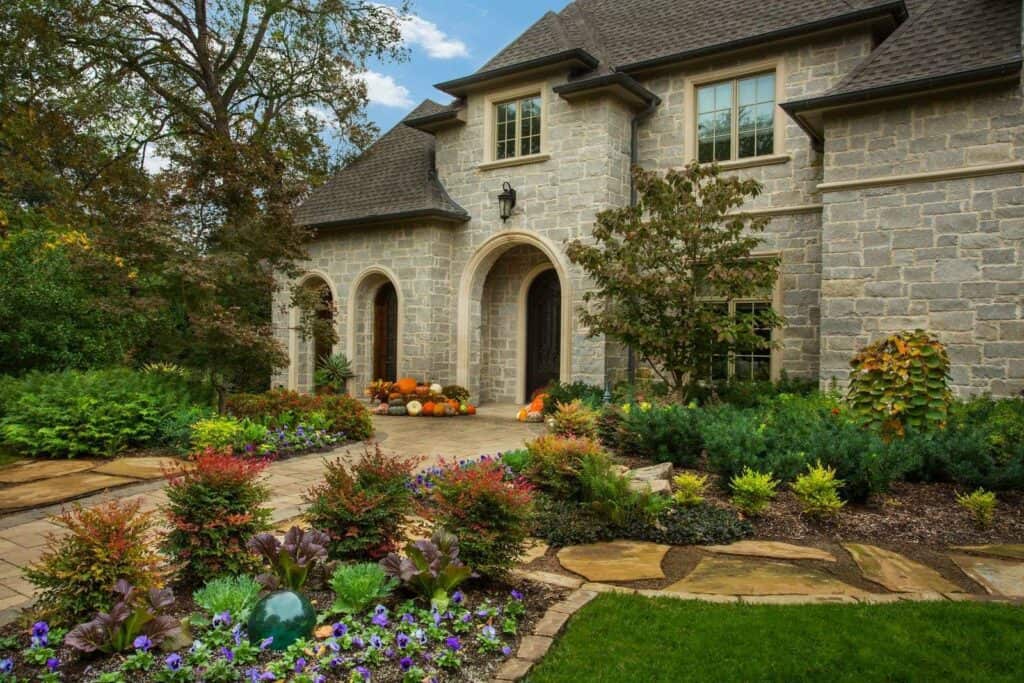Not known Incorrect Statements About Landscape Design
Table of ContentsLandscape Design - Truths3 Simple Techniques For Landscape DesignExamine This Report about Landscape DesignAn Unbiased View of Landscape DesignThe Landscape Design Statements
Formal design motif. Credit Rating: Gail Hansen, UF/IFAS The backyard is an expansion of the home where a variety of tasks occur. A backyard can typically be separated right into 3 areas: public (the front lawn), private (the backyard), and solution (normally the side lawn). The place of activity locations depends mostly on the kind of location, the size of area required, the kind of task, and the preferred proximity to other tasks and structures.The outdoors wall surface of the home typically acts as the first wall or beginning factor of an outside space. Incompatible uses ought to be separated, and related tasks, such as cooking and dining, ought to be assembled to make the backyard a lot more efficient and enjoyable. When using hardscape to produce rooms, use building and construction product comparable to that made use of in your house for connection from the home into the garden.
Connected areas. Credit Scores: Gail Hansen, UF/IFAS Utilizing comparable hardscape functions and repeating plants pulls the eye around the garden.
How Landscape Design can Save You Time, Stress, and Money.

For psychological convenience plants are used as physical or implied obstacles for personal privacy and safety and security. Physical obstacles block both the sight and access to an area and include fencings, wall surfaces and plant hedges. Implied obstacles, typically reduced expanding plants, obstruct gain access to but not the sight (Figure 9). Various other functions of plants consist of cleansing the air, preventing disintegration and soil loss, keeping dampness in the soil, and returning raw material to the soil.
Physical and indicated barriers. Debt: Gail Hansen, UF/IFAS For these factors, the kinds of plants to be made use of (such as trees, bushes, or groundcovers) ought to be chosen in the onset of planning (Landscape Design). Plant kinds are chosen for their useful capacities to make sure that their future purpose and called for room can be taken into consideration at the very same time

Not known Details About Landscape Design
Each Click Here plant mass is in front of, behind, or following to, an additional mass. Credit Report: Gail Hansen, UF/IFAS Repeating plants within a mass and repeating masses with similar plants connects the garden with each other. The individual plant attributes should be thought about to successfully layer and mass plants.
All plant make-ups begin with the major framework plants, the large, primarily evergreen background plants-such as the trees and huge shrubs. These plants different or enframe areas, manage the size of the room, and offer the beginning factor for picking the suitable attributes of the second layer, midground plants, for massing and infill.
Essential factors in the garden ought to be highlighted by the use unique plants, unique structures, or yard accessories. Noting limits or entries to rooms can be performed with entrances, arbors, and actions, or with making use of one-of-a-kind and colorful plants. The form and/or style motif of the yard will frequently help establish the essential points and exactly how they need to be highlighted.
Various other important places in the backyard are focal points, which is used to visually arrange a landscaped area. The type of prime focus frequently depends on the viewing perspective. Different point of views or point of views can expose different make-ups in the landscape that may call for a variety of focal points. Contrasting structure, form, size and shade will certainly capture and hold the eye.
How Landscape Design can Save You Time, Stress, and Money.

Figure 13. Plant types. Credit: Gail Hansen, UF/IFAS After form, appearance is the next leading feature of a plant; coarse, medium and fine textures can be utilized for comparison and focus in the landscape. Form and appearance both trump color in the garden for most of the year. Nevertheless, throughout particular periods, color will be the most visible quality of the yard.
The enjoyable fragrance of plants, the noise of wind in the trees, the audio and texture of water, and the shades and textures sites of sculptures, pots and yard furnishings all include in the experience of the garden. One detail that is frequently forgotten is the impact of light on the visual appeals of the plants.

Excitement About Landscape Design
It is necessary to recognize the eventual fully grown size of plants so they can be placed in the right area and spaced properly when they are installed. Providing plants space to expand is best site a challenge since the typical mature dimension is commonly based on ideal growing conditions and the ecological conditions of a site may trigger a plant to enlarge or remain smaller.